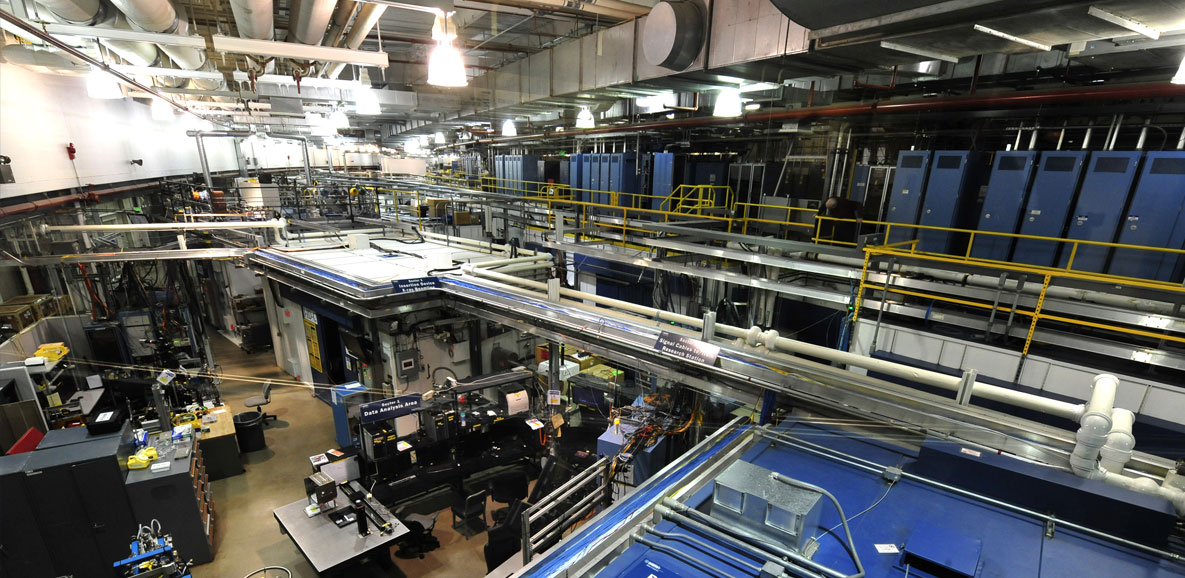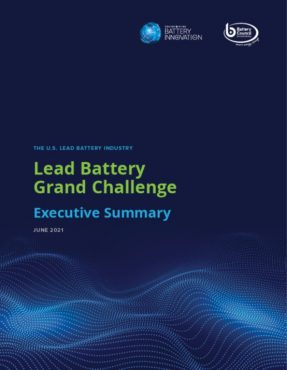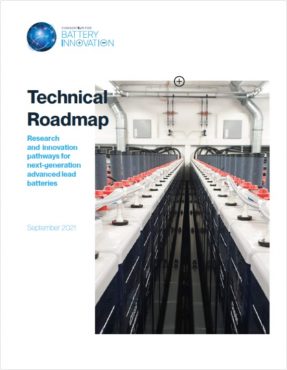
If you’re traveling to an unknown destination, it’s important to use a roadmap. As Yogi Berra said, “If you don’t know where you are going, you might wind up someplace else.” Berra, one of the greatest catchers in history, clearly knew he was headed for baseball greatness as helped lead the New York Yankees to 10 World Series championships.
The U.S. Department of Energy (DOE) likely would agree with Berra; the agency has been developing a robust plan to guide the nation’s journey to create and sustain American leadership in energy storage.
DOE has announced a series of programs to build a resilient supply chain and assert global leadership in batteries, specifically for energy storage.
Responding to DOE’s vision, the lead battery industry has issued a “call to arms for lead battery manufacturers, DOE and the national laboratories to partner on collaborate research that takes science from the laboratory to the marketplace,” said Roger Miksad, executive vice president of Battery Council International (BCI).
Building the Electric Grid of the Future
The DOE has created a roadmap to ramp up manufacturing capability so that the country’s demand for energy storage can be filled by domestic sources by 2030. The document outlines the needed characteristics for domestic energy storage and the cost and performance metrics necessary to meet the demands of the electric grid of the future.
The lead battery industry supports DOE’s objective of ensuring a secure electric infrastructure for America. Lead batteries are already an important part of a suite of energy storage technologies that are becoming increasingly essential to ensure a reliable and resilient electric power system.
The country’s electric power industry depends on a wide spectrum of technologies – including lead batteries – for numerous functions. Those range from providing backup power during system disruptions to facilitating the integration of power from variable resources (like wind and solar) to the electric grid.
Launching the Lead Battery Grand Challenge
To aid DOE in allocating research dollars to achieve its goals, the lead battery industry has just released a document titled “Lead Battery Grand Challenge.” It details how the lead battery industry, with its robust domestic supply chain, free of imports, is ideally positioned to contribute to achieving the goals set forth by DOE.
The roadmap, a joint project of BCI and the Consortium for Battery Innovation (CBI), seeks to establish possible research areas in lead battery performance, deployment and manufacturing to poise the industry for collaborative projects with DOE stakeholders.
The document notes that using the experience of the lead battery industry, in combination with the scientific skill and expertise of the national lab system, can realistically yield substantial performance gains.
“DOE’s renewed focus on energy storage R&D represents a unique opportunity for demonstrable gains in the U.S. battery industry. A high-performing and sustainable energy storage solution is key, and this is possible through a collaboration between the U.S. lead battery industry and the scientific excellence of the DOE,” said Dr. Matt Raiford, senior technical manager with CBI, and an author of the roadmap.
Potential improvements could double or provide even greater advances to cycle life and energy density. Such dramatic discoveries would further cement lead batteries as the only energy storage solution with so many desirable characteristics: intrinsic safety measures; highly sustainable; manufactured domestically; and meets the technoeconomic needs of the U.S. utility sector for decarbonization and distribution of the U.S. grid.
The industry’s roadmap complements six use case areas identified by DOE where the energy storage industry must evolve to meet the growing demand – and the U.S. lead battery industry already serves each of them:
- Facilitating an Evolving Grid
- Serving Remote Communities
- Electrified Mobility
- Facility Flexibility, Efficiency, and Value Enhancement
- Resilience and Recovery
- Interdependent Network Structure
U.S.-based manufacturers and suppliers of lead batteries are fiercely competitive in serving these use case areas with a variety of products and services. Furthermore, lead batteries support these areas with products that use no critical or conflict materials, are highly recycled, and are made in America.

A Track Record of Private Public Collaborative Research
The lead battery industry has demonstrated its ability to partner with DOE and its Argonne National Laboratory (ANL) through the Lead Battery Science Research Program (LBSRP). It operates under a cooperative research and development agreement with ANL and is funded by the American lead battery industry to conduct research into the basic science of lead battery operation. This model paves the way for future projects to accelerate innovation in new battery cell designs, additive discovery and battery architecture.
A Path Forward: Ready for Growth
“When you come to a fork in the road, take it,” is another of Berra’s well-known malapropisms that applies to the industry’s energy storage recommendations. With growing concerns for climate change and the associated need for renewable electric generation, the path ahead is clear for lead batteries.
The new market for battery energy storage is emerging to support the electric grid. From renewables absorption to demand reduction, both behind and in front of the electric billing meter, the need for batteries to store energy from the electric grid is growing, with more than 125 GWh of new grid-related storage needed by 2030.
Lead batteries can aid in meeting the challenge by offering a unique blend of safety, extensive domestic manufacturing infrastructure, and unparalleled sustainability. Furthermore, lead batteries provide reliable, inexpensive energy storage in many applications. These benefits are vital to asserting U.S. leadership in energy storage.








